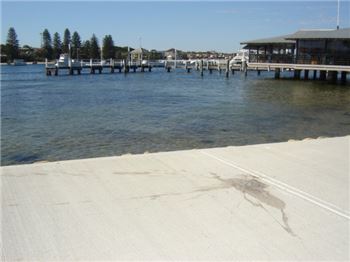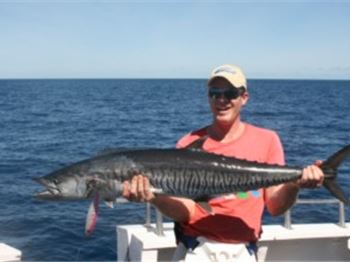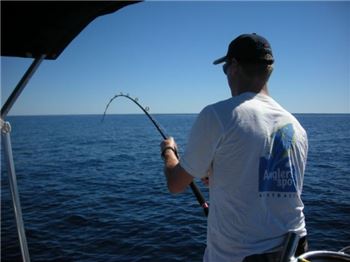What You Need To Know To Start Kayak Fishing
 Whether you're new to fishing or a regular on the pier, kayak fishing takes a slightly different set of skills. As you're limited on space, you need to be economical about what you bring, and you need to be patient. Also, if you fidget too much, you might tip your kayak.
Whether you're new to fishing or a regular on the pier, kayak fishing takes a slightly different set of skills. As you're limited on space, you need to be economical about what you bring, and you need to be patient. Also, if you fidget too much, you might tip your kayak.
Thinking about picking up this new hobby? Here is everything you need to know about kayak fishing, boat accessories and boat safety equipment.
Use Technology to Plan Your Trips in Advance
Unlike fishing on a pier, kayak fishing is virtually open to just about anywhere. You can paddle on lakes, streams and even in the ocean. Even if you're not a strong paddler, you can still venture out and catch some great fish.
The downside of this is that some fishermen get a little too ambitious. They think that by paddling harder and further they'll catch better fish, but it simply isn't true. Some paddle too hard and wear themselves about before they even cast a line. They also don't think about other boats. One strong wave from a speed boat could easily tip a kayak if the paddler isn't cautious.
Before you leave for your trip, go to Google Earth and look at the space you're going to be fishing in, if you don't already know the area well. This will help you plan where to leave your car and where to paddle once you get in the water. You also look for places you might want to paddle to ahead of time.
Of course, you should also research what types of fish live in the lake or river you're going to fish in. You'll know which types of bait and equipment to bring.
Choose the Best Kayak
When you buy or rent a kayak, you shouldn't choose the first one you see. There are several key factors to consider, so before buying or renting as yourself:
In general, will I be fishing mainly...
In salt or freshwater?
In areas where docks are easy to access?
For bass? Trout? Catfish? etc.
Different kayaks provide different needs. For example, if you're going to be bass fishing, then you'll need certain equipment as well as a little more space. Bass are usually large, and they put up a strong fight. You won't want to catch one in the smallest kayak available.
You will also need to take your desired comfort level and mode of transportation into account. As you will be sitting in your kayak for long periods of time, you need to make sure that you'll be comfortable. If you're not, then you won't want to use your kayak very often. If you cannot transport a large kayak, then you definitely shouldn't buy one.
With kayaks, everything needs to be within arm's reach. There are plenty of great boating accessories - paddle holders, coolers, anchors, additional storage and paddle leashes. Some kayaks come with these accessories, but others need to be purchased separately. Be sure you consider them when buying.
If you know of a kayak even in the area, head on over and speak with the salespeople as well as other buyers. They might be able to help you pick out the right kayak for your purposes.

Practice, Practice, Practice
If you're used to fishing on a steady surface, then kayaking may be difficult at first. It's not as simple as casting your line and waiting for something to bite. There are certain techniques and practices that will make you a better fisherman when out on a kayak, but they do take some practice to master.
First off, you need to know how best to position yourself when you're in a kayak. Always keep your paddle across your lap, and practice using it with just one hand. As you won't have anyone to lend a hand, you need to be comfortable controlling the kayak and your fishing line at the same time. Other kayakers may be casting their lines around you, so you don't want to get caught in someone's way or have them in your way.
Many kayakers prefer to drift when fishing because paddling will disturb the fish. Practice setting yourself up in one direction and keeping it as best as possible. Wind and waves from large boats may send you off in the opposite direction so practice turning yourself back to the right direction. You should be able to turn yourself with little movement from your paddle on either the port or starboard side.
You should also practice preparing your line while in the kayak. Before you leave your pier or the shoreline, practice getting your line together and casting it off. If you're new to fishing in general, you may feel clumsy rigging your fishing pole even on land, so practice it near the shore first before you paddle out. If you drop anything or need something, you can easily return to shore.
If you plan on fishing upwards or standing up at any time, it's best to practice in shallow water or near the shore. This can be tricky, and if you're not a strong swimmer, you might not want to chance it. Still, you might get a better cast if you stand up, so if your balance is good, start working on your standing abilities.
Safety First
Don't leave shore without your boat safety equipment. You should always be wearing a lifejacket, and you need to have a small first aid kit handy, in case you cut or otherwise hurt yourself.
Water reflects sunlight strongly, so if you're out during the day, be sure to bring extra sunscreen. You should also put some on before you even get in the boat to make sure you don't come back with a severe burn.
When in doubt, seek out other kayak fishermen and ask them about their experiences. They may be able to offer you other great tips and advice for getting started or making the transition from fishing on a pier to fishing in a kayak.
So tell us, what intrigues you most about kayak fishing? We want to know, so share with us in the comments!
Author Bio
As the former President of the Boating Industry Association, Rod's passion for boating and fishing is utilised in his current role as Managing Director of CH Smith . Offering his masterful expertise, Rod ensures that customers leave with a love for the sea that parallels his own.







